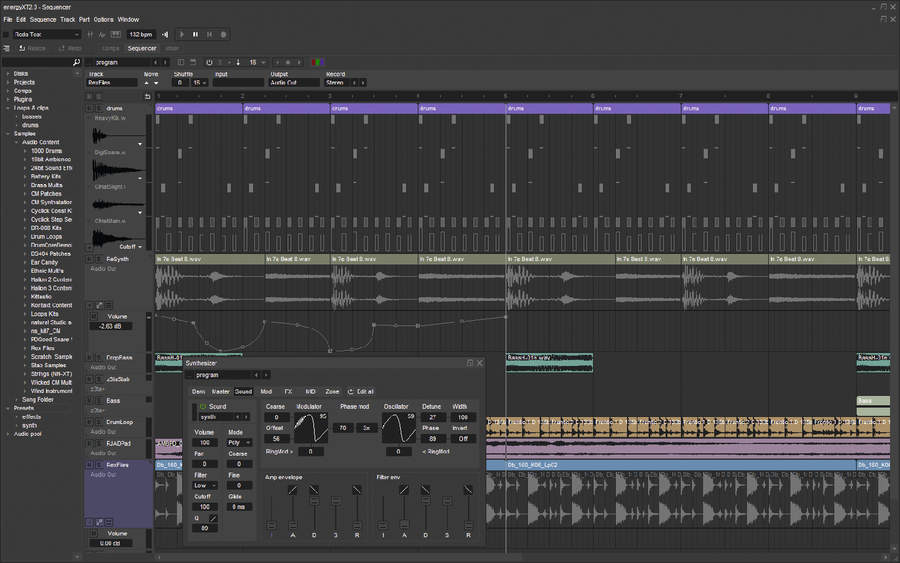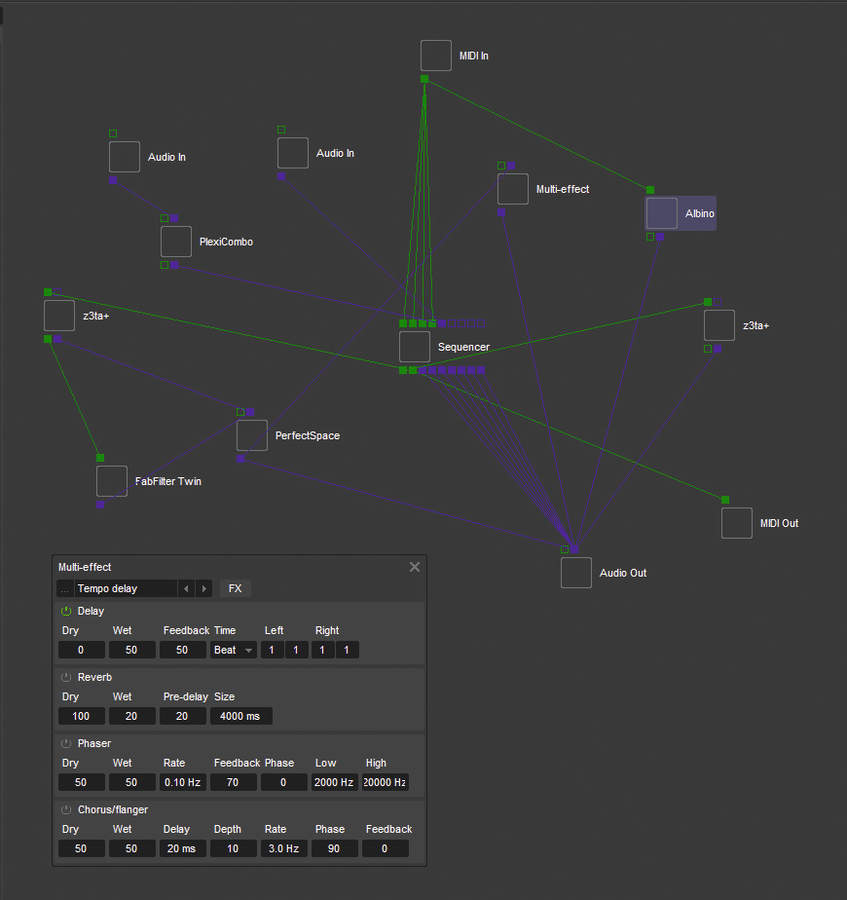MusicRadar Verdict
EnergyXT has blossomed into a cracking second version, combining innovative features with improved basic functionality. After a few corrections, energyXT2 will be a very tough DAW to beat.
Pros
- +
xtExcellent workflow. Clear, user-friendly interface. Super-flexible. Outstanding value. Best Linux option there is.
Cons
- -
Some features of the last version are missing. No MIDI panic, tempo automation or manual. Occasional instability.
MusicRadar's got your back




This sequel to the original energyXT has been a long time in the making, and its coming greatly anticipated by a loyal band of followers. It´s also been getting some extra attention due to the fact that it´s the first major PC audio application to be ported to Linux.
energyXT2 can be used as a standalone VST-compatible DAW in its own right, and the PC version can even be loaded into other applications as a VST, allowing you to use its features alongside those of your preferred host.
Features
The sequencer element of eXT2 will be familiar to anyone who has used one of the ‘conventional´ DAWs like Cubase: it combines audio and MIDI tracks, audio recording, clip editing, automation, and VST plug-in and instrument support in one easy-to-manage workspace.
To the left of the main screen is the new browser window, where you can peruse your VST plug-ins, sample collection, presets and projects. By dragging a plug-in, sampled loop or XTC preset (more on these later) from the browser and dropping it onto the sequencer window, a track is configured and a new channel added to the mixer automatically.
On the audio editing side, as well as the usual tools and envelope functions, you can now stretch or compress any audio, adjusting its tempo or pitch independently thanks to the excellent Elastique pitchshifting and timestretching algorithm. REX files can also be dragged and dropped into place, and manipulated in a dedictated slice-editing lane.
The sequencer has further tricks up its sleeve, including a unique drum track, allowing you to drop samples onto each of its lanes and trigger them using a grid. You also have control of pan, volume and a resonant filter for each individual hit. It makes for quick and intuitive programming of drum patterns directly from the main project screen, without using a separate drum editor.
Want all the hottest music and gear news, reviews, deals, features and more, direct to your inbox? Sign up here.
EnergyXT2 comes kitted out with a phase modulation synth/sampler to take care of many of your virtual instrument needs. Sampled and/or synthesized sounds can be layered and split across the keyboard before the application of a multimode filter, effects, envelopes, LFOs, glide, vibrato and more. It has a functional GUI and, like the sequencer, is very easy to get around. Crucially, the sound won´t leave you wanting either. As well as the synth, there´s also a multi-effects device with reverb, delay, phaser and chorus/flanger modules for spicing up your mixes.
In the original energyXT, all mixing duties had to be handled using the program´s modular Comps view, but version 2 now sports a conventional mixer as well. This has the usual volume fader, pan, mute and solo buttons for each channel, as well as a clip indicator, four-band EQ and an effects rack. Again, adding effects - whether inserts or sends - is as easy as dragging them over from the browser. Group channels can also be created for sub-mixing. energyXT2 introduces XTC loops, which are basically MIDI, audio, sampled loop, REX file or drum track parts that have been saved in the new XTC format.
Clearly, an incredible amount of thought has been put into energyXT2, assisted by a riotously faithful community of users, and all the hard work has most certainly paid off. The Comps modular routing area, which allows you to patch together effects and instrument modules as you see fit, is no longer as prominent as in the first incarnation, but it´s still there if you need it. In fact, you never have to enter the Comps area in order to use eXT2, but it offers an incredible level of flexibility on tap for the power user.
Verdict
It´s not all good news, however... There is no facility for on-the-fly tempo changes or tempo automation, although we hear this is on the wish list (and rightly so). There´s also no ReWire support or CPU-usage indicator, and some of the original eXT modules like the Slicer, Preset Randomizer and Arp are not included in this release. AIFF and MP3 files are not supported at all, so you´re limited to WAV and REX files. The developer tells us that these are all on the list for future updates, as is the inclusion of a MIDI panic button to bring an end to any hanging notes.
We experienced a few unexpected crashes during testing too, mainly associated with importing WAV files into Drum tracks, so hitting that Save button frequently is a must.
That said, the foundations of a truly great app are there, and at this stage there´s plenty of potential for further improvement and, of course, bug-fixes. We hope that a proper manual will surface at some point, too, as the closest thing to this at the moment are the tutorials on the website (which are good, to be fair).
Despite our criticisms, using energyXT2 to record and compose is a very fluid experience, and at this price, little comes close in terms of value. It´s a fully-fledged powerhouse of a sequencer that Windows users should certainly try out as an alternative to the more common apps. And if you´re a Linux user then rejoice, for this is the best music software for your OS to date.
MusicRadar is the number one website for music-makers of all kinds, be they guitarists, drummers, keyboard players, DJs or producers...
- GEAR: We help musicians find the best gear with top-ranking gear round-ups and high-quality, authoritative reviews by a wide team of highly experienced experts.
- TIPS: We also provide tuition, from bite-sized tips to advanced work-outs and guidance from recognised musicians and stars.
- STARS: We talk to musicians and stars about their creative processes, and the nuts and bolts of their gear and technique. We give fans an insight into the craft of music-making that no other music website can.
